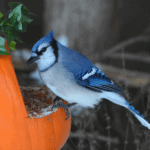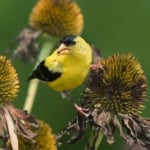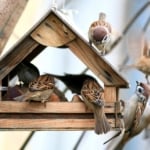Larkspur The July Birth Flower
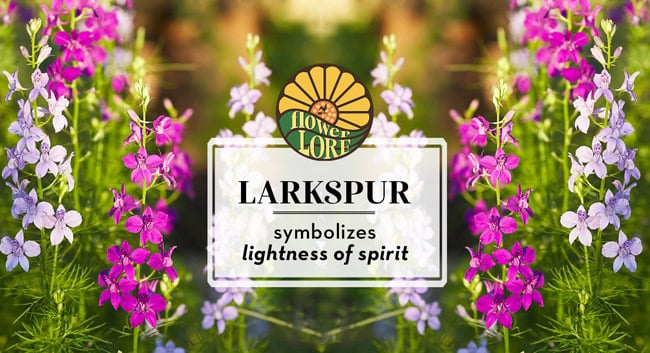
In the heat of summer, brilliant blooms of larkspur color the landscape across the northern hemisphere. As the traditional July month birth flower, larkspur is synonymous with summer, but it also has surprisingly rich folklore and symbolism that make it meaningful and far more than just a pretty flower. Along with the alternative July birth flower, water lily, these two blooms bring great color and culture to the midsummer month. Jump to larkspur meaning
About Larkspur
Larkspur is the common name of delphinium, more than 300 species of plants in the family Ranunculaceae, including some species of the genus Consolida. These highly toxic plants are related to ranunculus, clematis, monkshood, aconite, and meadow-rue. Depending on the exact plant, larkspur can be annual, biennial, or perennial, and may grow from 12-84 inches in height.
These flowers are native to the northern hemisphere and different varieties are found in Europe, North America, Central America, Asia, and the high tropical mountains of Africa. Larkspur can be found in meadows, prairies, and forests where conditions are right for these blooms to flourish. While a typical larkspur plant may only live 2-3 years, they do readily reseed and will continue to grow in the same area as new plants bloom.
The common name larkspur was given to these flowers as the distinct flower structure resembles the claws of the widespread meadowlark, and in fact, alternative names are “bird’s claw” “lark’s heel” and “lark’s claw.” “Knight’s spur” is another, less widely used name for these flowers. The name delphinium came from the ancient Greek word delphinion or “dolphin” in reference to the shape of the flowers that can resemble a jumping dolphin or the head of a dolphin with its unique snout, most noticeable with closed flower buds.
Larkspur has upright growth with each stem supporting a profusion of palmate blooms for a striking show of color and texture. Butterflies, bees, and hummingbirds love this nectar-rich flower, and in autumn, the brown or copper-colored seeds add even more interest to the landscape.
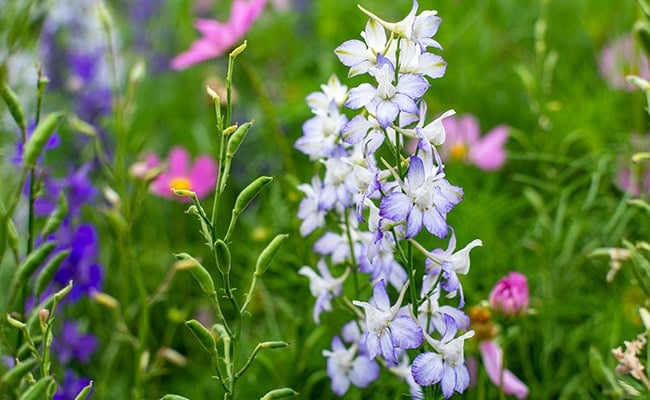
Related Product: July Birthstone – Onyx Necklace
Larkspur Colors And Symbolism
These flowers come in a wide spectrum of colors, from purple and blue to red, yellow, white, orange, and pink. While not every color has a specific meaning, some shades do have associations with specific emotions. White larkspur, for example, is symbolic of happiness, while blue shades represent dignity, grace, and tranquility. Purple larkspur is associated with one’s first love, but pink hues indicate fickleness or an unsettled quality.
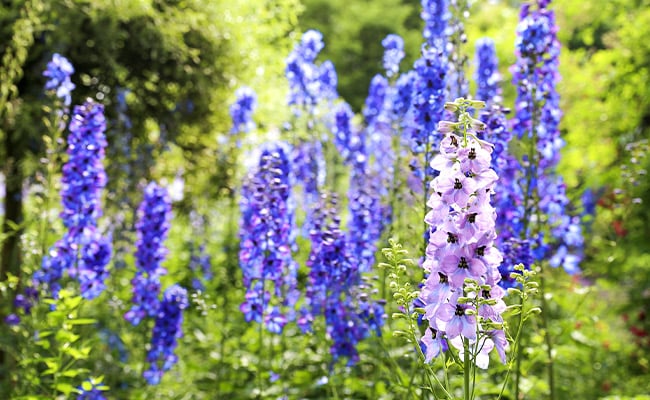
Overall, larkspur can have a wide range of meanings – love, affection, sweetness, strength, laughter, purity, joy, transformation, lightheartedness, youth, and more. This makes delphinium a versatile flower in floriography, the language of flowers, whether it is used in a flowerbed, cut bouquet, or elaborate arrangement.
Of special note is the idea that larkspur is associated with lightness of spirit, a nostalgic feeling in July as school is out for summer, family vacations are scheduled, and it is a time for youthful adventures – trips to the beach, a day at an amusement park, fun at a parade, and more.
In addition to being the official July birth month flower, larkspur is also associated with the Zodiac sign Cancer, which runs from June 21 through July 22. The flower is also sometimes symbolic of the eighteenth wedding anniversary, which while that anniversary has no official flower, is connected to the color blue – and larkspurs come in beautiful shades of blue.
Any questions? Contact [email protected]
More Larkspur Flower Meaning: Legends And Superstitions Around The World
With the widespread geographical distribution of these flowers, it is no surprise that larkspur has origin myths, legends, superstitions, and folklore in many different cultures. The ancient Greeks, for example, believe the flower originated from the tragic suicide of the hero Ajax, who killed himself in anger, and larkspur sprang from drops of his blood. The flowers would forever tell of his anguish, as their petals formed his initials – AIA (about as well as they form a dolphin head, but still recognizable).
Roman legends, however, attribute the formation of larkspur to the sea god Neptune, who transformed an endangered dolphin into the flower to protect it, which gave the bloom its characteristic shape.
In China, larkspur is believed to be a lucky flower, particularly associated with the Year of the Dragon and the Dragon sign of the Chinese zodiac. Giving, planting, or displaying these flowers is especially popular during the lunar new year of Dragon years (i.e. 1964, 1976, 1988, 2000, 2012, 2024, 2036, 2048). Incidentally, July is also a lucky birth month for Dragons, just when this July birth flower is most popular.
The Pawnee tribe of North America and other Native American peoples have different legends surrounding larkspur. When Dream Woman – sometimes described as a goddess, a mythological figure, or a celestial being – broke open a hole in the sky to look down on humans, bits of the sky fell to earth and became larkspur flowers.
In Transylvania, larkspur is believed to have protective powers and was often planted around stables to ward off the attention of witches. Likewise in England, sprinkling larkspur in one’s bathwater is said to offer protection from ghosts and magical spells.
Italian folklore believes larkspur originated after three brave warriors slew a dragon and wiped their blades on the grass to clean off its blood. The blue blood of the dragon gave these flowers their bold color, while the venom of the dragon contributed to larkspur’s toxicity.
It is no surprise that a flower as widespread and recognizable as the rose has been used for many symbolic purposes, especially for heraldry and insignias. The rose is featured in some way on dozens of coats of arms, including for Bournemouth, Calgary, Finland, Grenada, Montreal, and Saint Lucia, among many other cities, noble houses, and royalty.
Similarly, the rose is the official state flower of Iowa, North Dakota, Georgia, New York, Oklahoma, and Washington, DC, as well as the official provincial flower of Alberta, Canada.
The Dark Side Of The Larkspur Flower
The Italian superstitions associated with larkspur and the venom of the dragon are well-founded, as these flowers are filled with highly poisonous diterpene alkaloids. In fact, every part of the delphinium plant – stem, roots, leaves, flowers, and seeds – is toxic. Younger plants are the most toxic, but even mature plants are poisonous to humans, cats, dogs, and other wildlife. In some cases where larkspur is on pasture land, it has been known to cause fatalities in cattle if they consume enough.
Depending on how much larkspur is ingested, symptoms of its toxicity can range from vomiting, diarrhea, constipation, and other stomach upset to convulsions, low heart rate, breathing difficulty, and low blood pressure. On the skin, redness, irritation, and a burning sensation can result from handling the plants, and it is always advisable to wear gloves when working with delphinium.
Interestingly enough, despite the plant’s well-known toxic qualities, larkspur has still been used for medicinal purposes. It has been used to treat lice, as well as asthma and eye diseases. Take note, however, that none of these uses are scientifically proven to have any true medical value.
Where larkspur can be beneficial is in aromatherapy. These flowers have only a mild scent, often described as “fresh” or “clean” rather than having any recognizable components. This does make larkspur useful for lotions, candles, cosmetics, and essential oils, and it can help relieve stress and anxiety without an overwhelming aroma.
Growing Larkspur
Delphinium is relatively easy to grow but needs the proper conditions to thrive. These plants prefer fertile, slightly alkaline soil. The soil must be kept moist but not soggy, and good drainage is a must. Full sun exposure will help these flowers reach their full potential with glorious growth and bold color, but afternoon shade is best in hotter areas where the plants might scorch.
Because of larkspur’s height, they are often planted in the center of flowerbeds or used to add height to the rear of beds. They can also make a beautiful border, and are a favorite in cottage garden designs to create a lovely tiered effect with other blooms. Take care, however, not to plant larkspur in windy spots or else the tall plants might droop or be blown over. Staking and providing support for taller varieties – and some grow as tall as 7 feet! – is essential. Opting for dwarf varieties can bring the beauty of larkspur to the landscape without needing staking or support.
As larkspur’s toxicity is well known, this flower should not be planted where it will be easily accessed by children, pets, or livestock. As it is deer- and rabbit-resistant, it can be a good border around garden areas to help keep unwanted guests away from preferred plantings. Consult with local garden centers when choosing larkspur varieties, however, as some are considered invasive and may be less desirable in the yard.
Larkspur is susceptible to various diseases including powdery mildew, crown rot, blight, and leaf spot, as well as pests such as slugs, snails, aphids, and mites. Watering the flowers at the base or using a drip or soaker system will help minimize these difficulties. Deadheading will also minimize damage and encourage reblooming so larkspur can be enjoyed throughout the growing season. Just take care to wear gloves to avoid any skin irritation! Furthermore, if larkspur will be used in cut arrangements – they are lovely, after all – take care that the vase is not in reach of curious children or pets, as even after cutting these plants are still toxic.
While larkspur can be a beautiful addition to the landscape, its high toxicity and occasionally invasive nature might not be suitable for everyone. Instead, alternatives such as snapdragons, gladiolas, and various types of lilies can offer a suggestion of larkspur without its dangers.
Alternate July Birth Month Flower: Water Lily
An alternative to larkspur that has the same symbolism as the symbolic July birth flower is the water lily, the month’s secondary birth flower. From the family Nymphaeaceae, there are approximately 70 water lily species, and all of them offer outstanding beauty. These aquatic flowers are rooted in the rich, dense soil of shallow ponds, while the stems grow vertically and the large, flat round leaves and beautiful blooms float on the surface or extend just above it.
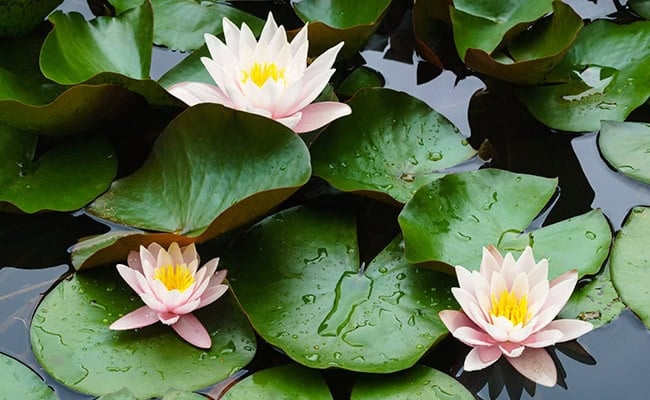
The water lily family is named after the Greek nymphs, mythological spirits of water, and both the blooms and the mythological figures have been featured in poetry and artwork, especially a wide variety of paintings. Water lilies are associated with the Zodiac sign Pisces (February 19 through March 20) as a water sign, and are heralded in Buddhism and Hinduism as symbolic of resurrection and spiritual enlightenment. In Egyptian culture, water lilies are sacred to the goddess Isis and symbolize the sun, creation, and rebirth.
The ancient Mayans, however, had a different use for water lilies. While still revered as sacred, the flowers were also a practical means to test water filtration systems, including reservoirs and dams, for proper flow and chemical composition. If water lilies could thrive, the systems were functioning well.
Unlike larkspur with its prodigious blooms, water lilies are solitary flowers but still have a range of colors from classic white and cream to yellow, orange, red, pink, purple, and blue.
Overall, water lilies have many symbolic meanings, from purity and innocence to grief, passion, wealth, wisdom, and fun. This versatility makes them easy to use for a wide variety of meanings and nuances to celebrate birthdays and any special occasion in July or other summer months.
Today, the water lily is the national flower of Guyana, Bangladesh, and Sri Lanka, and many beautiful botanical gardens feature stunning water lilies. They can be a lovely ornamental addition to a backyard pond, or may even be part of a container pond for a surprise bloom.
Which do you prefer, larkspur or water lilies, for the most iconic July birth flower? Both blooms have their merits, and understanding more about them can help you enjoy the richness either one can bring to the midsummer landscape.
Join The Discussion
Which July birth month flower do you prefer: larkspur, water lily, or another?
Did anything surprise you about the larkspur flower meaning?
Share your thoughts, tips, and tricks in the comments below!

Melissa Mayntz
Melissa Mayntz is a writer who specializes in birds and birding, though her work spans a wide range—from folklore to healthy living. Her first book, Migration: Exploring the Remarkable Journeys of Birds was published in 2020. Mayntz also writes for National Wildlife Magazine and The Spruce. Find her at MelissaMayntz.com.



